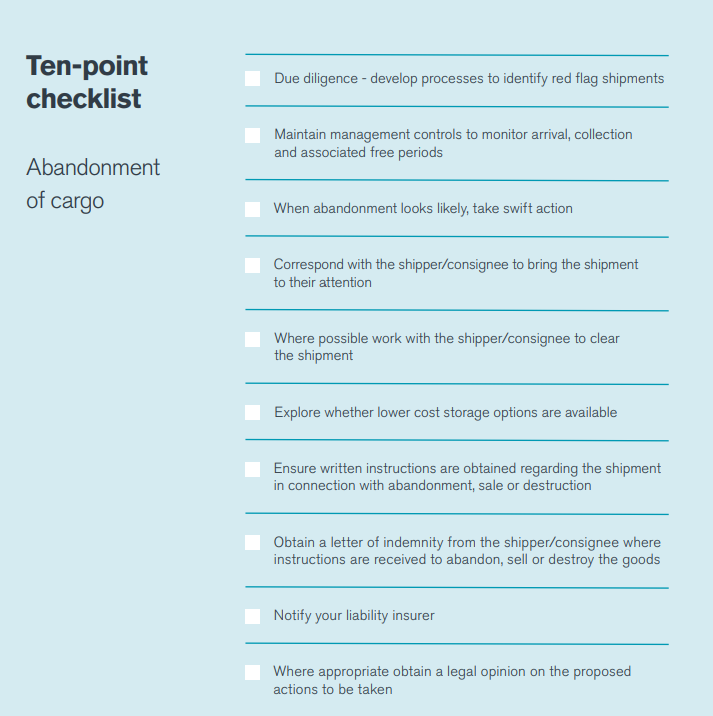With supply chain congestion and widespread delays in the international container trades set to continue, the vexatious challenges of abandoned cargo will remain and probably increase, as TT Club warns.
Abandoned cargo is a continuous challenge for supply chain stakeholders, resulting not only in considerable costs on container demurrage, detention, storage and disposal costs, but also increased safety and regulatory risks.
Aside from these identified risks, incidents of abandoned cargo demand a significant management resource to resolve and have the potential to impact commercial relationships.
In the wake of the situation, TT Club has issued a StopLoss document to provide practical guidance on the issue to stakeholders across the supply chain.
According to the guidance, the potential catastrophic impact arising from the deterioration of abandoned cargo cannot be disregarded as a remote risk.
However, the considerable costs accruing from container demurrage, detention, storage and disposal regularly result from cargo that, for a variety of reasons, is no longer required by the original receiver or consignee, and is simply abandoned at a port terminal or cargo facility.
Increased risks of safety and regulatory infraction are inevitably consequent, as well as significant demand on management and operational resources to resolve individual cases.
“Levels of cargo abandonment have always been problematic to forwarders, NVOCs, logistics operators and, of course container terminals,” …comments Peregrine Storrs-Fox, TT’s Risk Management Director.
“The surge in container demand over recent months has however compounded container ship capacity issues, port congestion and consequent severe transit delays. These factors will do little to alleviate the practice of cargo interests, in circumstances of loss of market for goods or bankruptcy, simply relinquishing ownership of consignments.”

There needs to be a greater understanding of why cargo is abandoned.
…TT Club concludes.






























































